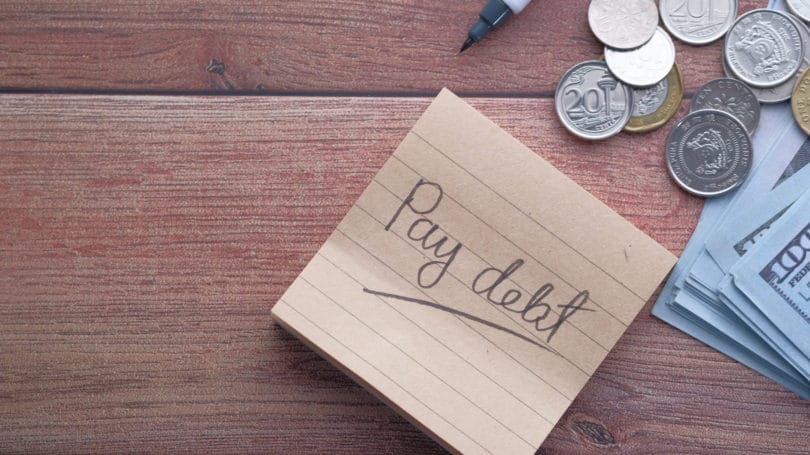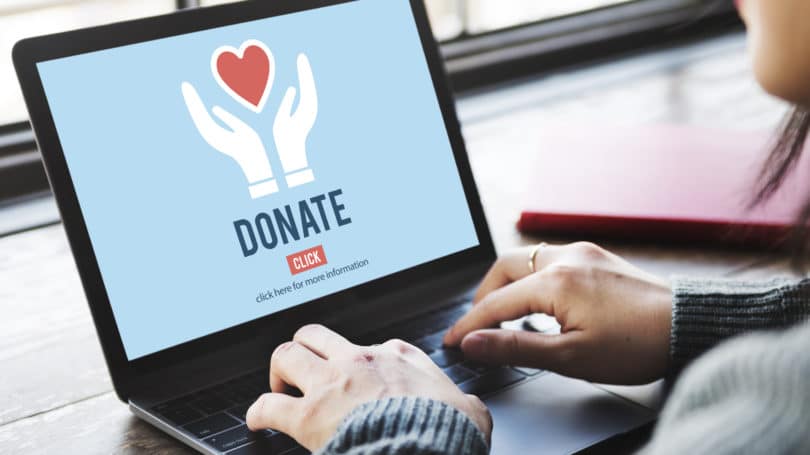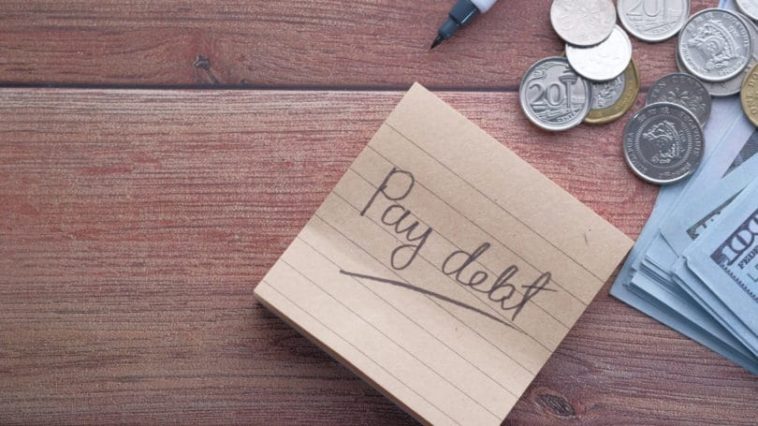How to Best Use Your COVID-19 Economic Stimulus Payment
On March 25, 2020, the United States Senate passed the broadest economic stimulus measure yet in response to the COVID-19 pandemic. Dubbed the Coronavirus Aid, Relief, and Economic Security Act, or CARES Act, the $2.2 trillion package provides sorely needed relief for individuals and businesses impacted by the pandemic and resulting economic carnage.
One of the CARES Act’s core provisions was the promise of one-time direct cash payments to millions of lower- and middle-income Americans. These payments were worth up to $1,200 per individual and $2,400 per joint-filing couple. In December 2020, the U.S. Congress passed another coronavirus stimulus measure that included a second, smaller round of direct stimulus payments. Yet another round is likely to disburse before the end of the first half of 2021, making three rounds of direct payments to Americans since the start of the pandemic.
If you’re fortunate enough to have received one, two, or all three stimulus rounds, you need to think about what to do with your stimulus payment — and plan for any projects that require extra time to set in motion.
What You Can Do for Yourself

Free money is difficult to refuse. If you plan to keep part or all of your stimulus payment for yourself, you can:
Enroll in a Health Insurance Plan & Make Your First Premium Payment
If you don’t have health insurance through your employer or a state or federal marketplace plan, now’s the time to get it. Knock on wood, you won’t need it, but some experts predict that up to 70% of the world’s population will contract COVID-19 at some point — meaning a doctor’s visit or hospital stay could be in your future. Even if you avoid infection, health insurance offers valuable financial protection against unexpected medical expenses.
If your employer doesn’t offer health insurance coverage, see if your state’s health insurance marketplace has a special enrollment period during the COVID-19 pandemic. Minnesota’s special enrollment period ran for about a month during the early stages of the pandemic, for instance. Use your stimulus payment to cover your first premium (and perhaps future payments, depending on your policy’s cost).
Finish Your Life Insurance Application
According to data compiled by the Centers for Disease Control and Prevention, COVID-19 is not a death sentence. But it’s also not “just the flu,” as skeptics claim. Though we may never know the precise U.S. case infection or fatality rate due to inadequate testing, it’s safe to say COVID-19 is at least several times deadlier than the seasonal flu. And though the elderly and those with underlying health issues like hypertension and diabetes are at higher risk of serious illness, COVID-19 kills young, healthy people as well.
That’s a long way of saying that now isn’t a bad time to apply for life insurance, even if you believe your risk of dying of COVID-19 is low. If social distancing rules complicate the scheduling of the paramedical exam many insurers require for higher coverage amounts, apply for a smaller no-medical-exam policy through companies like Bestow to start, and add more coverage when the danger passes. No-exam policies carry higher premiums than policies that do require exams, but beggars can’t be choosers in a pandemic. And you can use your stimulus money to cover your policy’s first premiums.
Start or Build an Emergency Fund
Every American needs an emergency fund to cover unexpected expenses or compensate for a sudden loss of income — especially in times like these. Experts recommend keeping enough in your emergency fund to cover at least three months’ expenses should your income completely dry up. Enough for six or even nine months’ expenses is better.
A one-time payment of $1,250 isn’t enough to cover a single month’s expenses for most Americans, let alone three, six, or nine. But it’s a start. If you don’t need the money urgently, save it for a rainy day by putting it in a high-yield savings account from a bank like CIT Bank.
Pay Off Lingering Debt
A one-time payment of $600, $1,200, or $1,400 probably isn’t enough to completely zero out your student loans or eliminate all your outstanding credit card balances. But it’s a start. Think of it as a massive debt snowflake to chip off high-principal or high-interest debt.
For maximum effect, apply your payment to the highest-interest balance on your ledger. Or pay off a smaller balance in full for a psychological boost.
Contribute to a Tax-Advantaged Retirement Account
Historical equities market returns far exceed current interest rates on secured loans like mortgages and auto loans. If you have no outstanding unsecured debts (such as credit cards or personal loans), your stimulus payment could do its best work in the market — provided your time horizon is long enough to smooth out near-term volatility.
Open an IRA (if you don’t already have one) through a brokerage like You Invest by J.P. Morgan (or another great place to open an IRA) and make your first deposit.
Start or Add to a Taxable Brokerage Account
If you’re already contributing the annual maximum to your IRA and any other tax-advantaged accounts — such as a solo 401(k) — deposit your stimulus check in a taxable brokerage account instead. While you won’t reap any special tax benefits, your account’s long-term appreciation is likely to exceed yields on FDIC-insured savings accounts or CDs.
Pro tip: If you have a 401(k) or an IRA, make sure you sign up for a free portfolio analysis from Blooom. They will make sure your portfolio is properly diversified and has the correct asset allocation. They’ll also check to see that you’re not paying too much in fees.
Start or Build Your Kids’ College Fund
Most states allow taxpayers to deduct 529 education savings plan contributions on their state income tax returns up to a predetermined contribution limit (up to $5,000 for individuals and $10,000 for married filers each year, depending on the state). Contributions above the deductible maximum are permitted (subject to much higher account contribution limits) but have no immediate tax benefits.
If your state offers this benefit, putting your stimulus payment toward your kids’ future education expenses can significantly reduce your state income tax liability. Even if your contribution isn’t deductible, plan earnings are tax-free when used for qualified education expenses, so you’ll reap the financial benefits eventually.
Tackle Long-Deferred Home Improvement Projects
While always taking care to avoid home improvement projects that decrease resale value, your stimulus windfall could be the perfect opportunity to invest in long-deferred home improvements. Prioritize home improvements that can save money in the long run, such as sealing leaky windows or doors and replacing your antiquated thermostat with a smart or programmable model.
Invest in Your Work-From-Home Business or Side Gig
Widespread social distancing measures and state-enforced stay-at-home orders are keeping millions of nonessential workers confined to home offices — whether an actual home office in a spare bedroom or a makeshift office at the kitchen table.
If you’re in the same boat, consider using the time to invest in a side business or passive income stream that could strengthen your finances on the other side of the crisis. The list of legitimate ways to make money from home is extensive. Though few stand any chance of making you rich or even replacing a full-time income, some are productive enough to reliably make you an extra $1,000 per month.
Tend to Your Mental Health
In addition to its obvious physical toll, the COVID-19 pandemic has a subtler health consequence: an immeasurable increase in Americans’ collective stress levels, with tragic consequences such as a marked increase in domestic violence calls, according to East Texas ABC affiliate KLTV).
There’s no shame in admitting the pandemic is taking a toll on your emotional health. Nor is it a sign of weakness to seek professional help to see yourself through — by phone or video chat until the pandemic ends, of course. If you have health insurance, check the details of your plan’s mental health coverage, including copay (if any) and providers in your network. But don’t be surprised if your plan’s in-network provider selection is limited, as many therapists don’t take insurance.
Without coverage, expect to pay at least $50 per half-hour session and perhaps more. You’ll likely need to pay for several sessions upfront — maybe a month’s worth — after which you can reevaluate your needs and cease therapy if you don’t feel it’s worthwhile. Online alternatives like Talkspace could be more cost-effective, especially if therapists are expensive or in high demand in your area.
What You Can Do for Others

If you still have your job and your health, you know deep down others need your stimulus money more than you. The sheer scale of the pandemic-induced need is overwhelming — so much so figuring out where to begin is its own challenge.
Don’t let that stop you. If you want to donate your check, there are several ways you can help.
Buy Supplies for a Food Bank or Drive
The COVID-19 pandemic is a period of unprecedented hardship for millions of Americans who’ve lost jobs, had their hours reduced, or seen gig-based income streams evaporate. Many are struggling to put food on the table.
In this time of heightened need, one of the most effective things those of us who aren’t food-insecure can do is donate nonperishable food to reputable food banks or food drives. Doing so is as easy as finding a provider accepting donations in your area or participating in a food drive sponsored by a community or faith organization, loading up at the grocery store (preferably during off-hours to avoid crowding or via delivery), and dropping off your goods.
Donate to a COVID-19 Response Fund
Reserve a portion of your stimulus payment for a cash donation to a local or international COVID-19 response fund. Many major cities have locally based funds, often operated by local charities. Seattle’s COVID-19 Response Fund is operated by the Seattle Foundation, for example.
If your area doesn’t have a response fund or you’d like to help the response around the world, you can donate to the World Health Organization’s COVID-19 Solidarity Response Fund instead.
Donate to a Local Charity Serving Vulnerable Populations
Many other organizations are doing essential work in your community right now. Despite a temporary nationwide foreclosure suspension and eviction suspensions in many cities and states, the crisis is hitting those already homeless or housing-insecure especially hard, increasing demand on homeless shelters and addiction treatment centers.
Donate to Nonprofits in Health Care or Emergency Aid
COVID-19 is stretching developed countries’ health care systems to the breaking point, but the situation is even direr in places with underdeveloped health care systems. Organizations like the International Committee of the Red Cross and Doctors Without Borders provide lifesaving aid in some of the poorest, most conflict-ridden parts of the world.
Unfortunately, the COVID-19 pandemic hasn’t put a halt to other pressing health care and security needs — in Syria and Yemen, millions of conflict-displaced people face imminent danger from malnutrition and preventable disease outbreaks, to cite just two examples.
Give Money Directly to Those You Know Are Struggling
You almost certainly know someone materially impacted by the COVID-19 pandemic’s economic fallout, if not the illness itself. They could be friends, extended family members, laid-off colleagues or professional contacts, or neighbors. You can use part of your stimulus payout to lend them a hand, perhaps by buying a week’s worth of groceries or covering a utility bill or two.
Yes, they’ve likely received the same windfall as you, but they still need the help more right now.
Contribute to a Virtual Tip Jar
COVID-19 dealt crippling blows to the restaurant and entertainment industries. Countless restaurants, bars, and venues have shuttered completely. Sit-down establishments remaining open for takeout and delivery lost less revenue, but with no in-person diners to accommodate, many have laid off or furloughed servers anyway.
Creative servers and allies nationwide have settled on an ingenious solution: virtual tip jars. According to the local ABC affiliate, the virtual tip jar for the normally bustling college town of Gainesville, Florida, is a website where servers can leave their Venmo or PayPal details for generous customers to top up. Check Google for similar sites serving your area.
Run Errands for Older or Disabled Neighbors
In the best of times, many elderly and disabled people — especially those on fixed incomes — struggle to make ends meet. In the throes of a pandemic that makes even a simple trip to the grocery store dangerous for high-risk individuals, they’re effectively under siege.
Help them out by running errands on their behalf, using your stimulus payment to subsidize the cost of driving around town or picking up a grocery tab. If you don’t personally know anyone shut in for the duration of the pandemic, put out a call on a community network like Nextdoor or connect with a local mutual aid society (Philadelphia’s Philly We Rise is a good example).
Patronize Your Favorite Restaurants and Small Businesses
Shuttered or downsized service business employees aren’t the only ones suffering hardship during the COVID-19 pandemic. Their bosses are contending with the very real possibility their businesses won’t survive the damage.
If you value a strong, diverse base of locally owned enterprises, do what you can to support small businesses during the COVID-19 pandemic. Depending on your personal preferences, this could mean:
- Using DoorDash to order delivery or takeout from restaurants still open for business
- Ordering things online that you usually buy in person, like books and clothing, from independently owned retailers in your hometown
- Purchasing carryout beverages from breweries and bars
Any enterprise that would typically earn your business and hasn’t yet closed down is a worthy recipient of your stimulus money. Deciding how to dole it out could actually be fun.
Other Sources of Assistance
Not everyone has the luxury of saving their stimulus payments for a rainy day, paying down debt, or investing in an income-producing venture. Millions of Americans have lost their jobs as a result of the pandemic, and millions more will follow before it’s all over.
If you’re dealing with a sudden loss of income due to a layoff, reduction in hours, or loss of business, the stimulus packages’ other provisions could provide a lift:
If you’re urgently struggling to make ends meet, look into these legitimate resources for emergency financial assistance as well.
Final Word
Creative recipients should have no trouble thinking up worthy outlets for their COVID-19 stimulus payments. All the ideas on this list are reasonable and constructive. If you’re careful with your payment, you can probably afford to try several before funds run out.
What you shouldn’t do is invest any part of your stimulus funds in a potential coronavirus scam. That’s easier said than done, unfortunately. Clever scammers are happily exploiting the public’s better angels and posing as COVID-19 charities to cash in on our collective desperation to find a cure or effective treatment for the disease. Tread carefully — you’ve earned your stimulus payment, whether or not it feels that way.
Published at Tue, 09 Feb 2021 16:00:25 +0000





Comments
Loading…